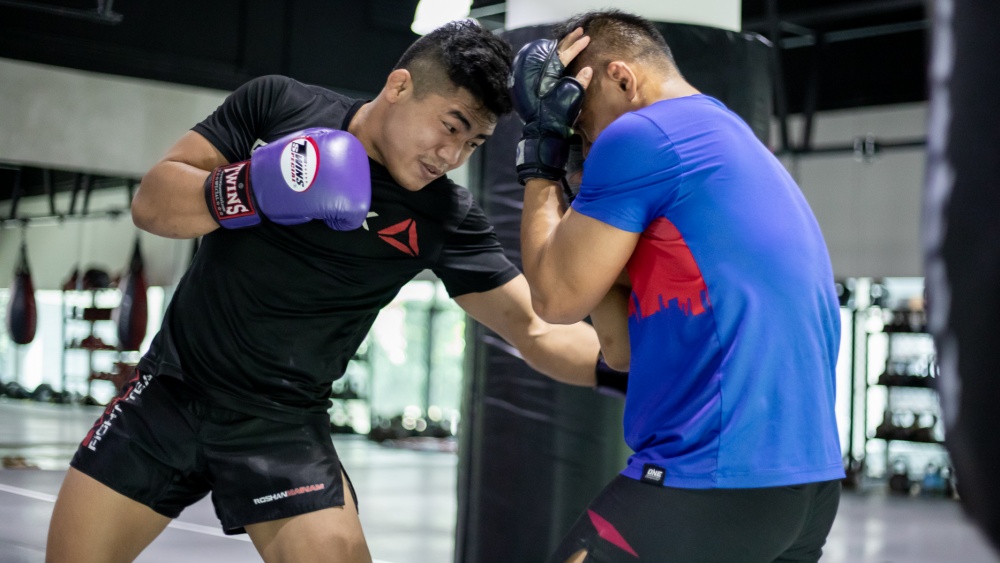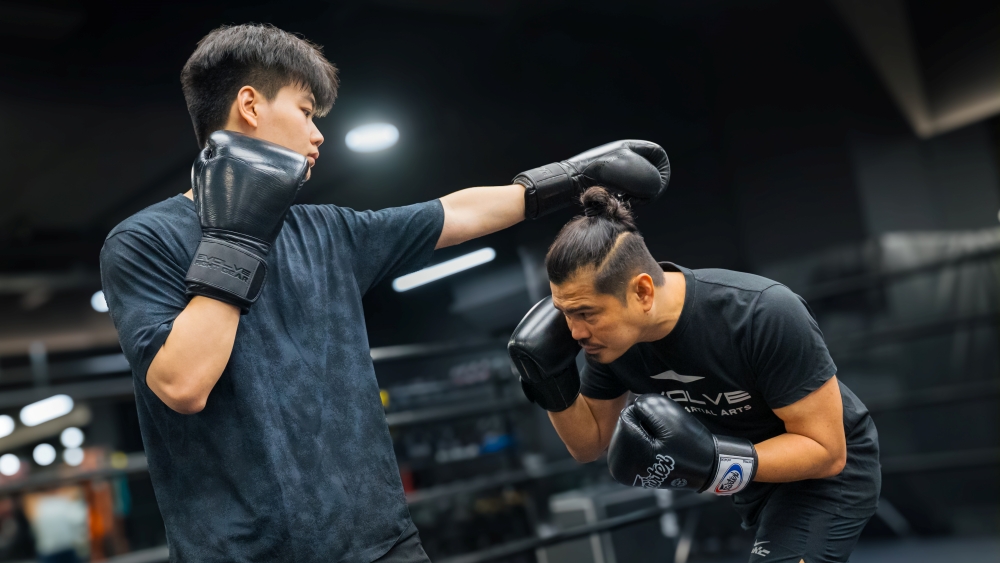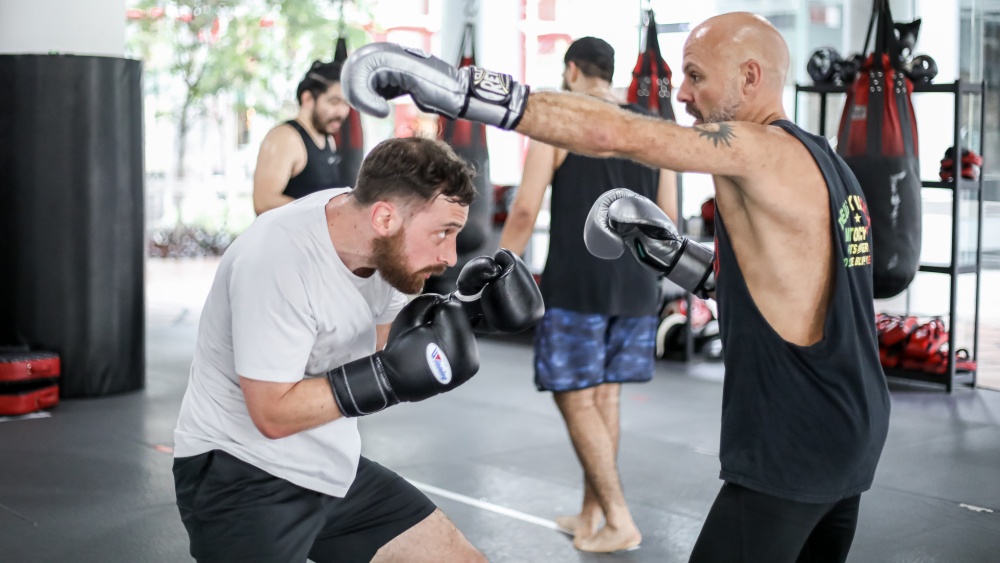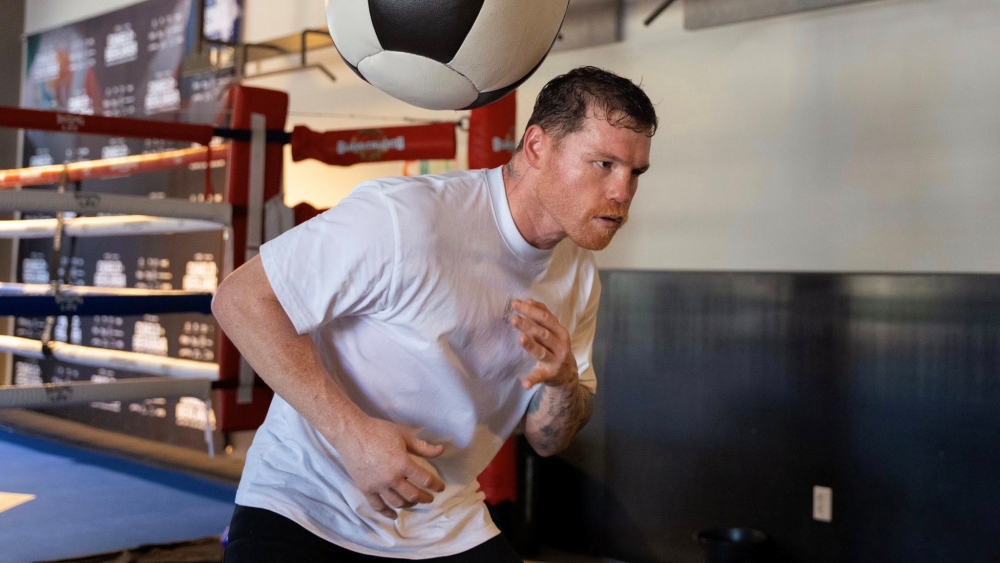Some coaches argue that you should learn boxing defense before you even learn to punch – it’s that important to your overall skillset.
Defense is 50% of the sweet science, but it’s an aspect of the sport that so many people, particularly beginners, neglect in favor of practicing offense. It’s much more fun to blow off some steam by letting rip on the bag or pads when you’re in class, right?
Just like methods of attack, there are countless ways to defend yourself in boxing. For that reason, it’s best to learn just a few things at first and get comfortable with them before you explore every facet of protecting yourself.
You would not expect a novice to rip an eight-shot combination to the body and head, so it’s unrealistic to expect to gain the ability to bob, weave, slip, and slide around the ring like Floyd Mayweather Jr. when you first start out, either.
However, by grasping the core principles laid out below, you’ll build knowledge that will allow you to minimize the amount of damage you absorb as you take your first pugilistic steps. It will also serve as a solid foundation for you to build more complex skills on top of.
Note: all instructions are for orthodox (right-handed) fighters facing other orthodox fighters. For southpaw (left-handed) vs. southpaw, just flip the instructions for left and right.
Defensive Fundamentals
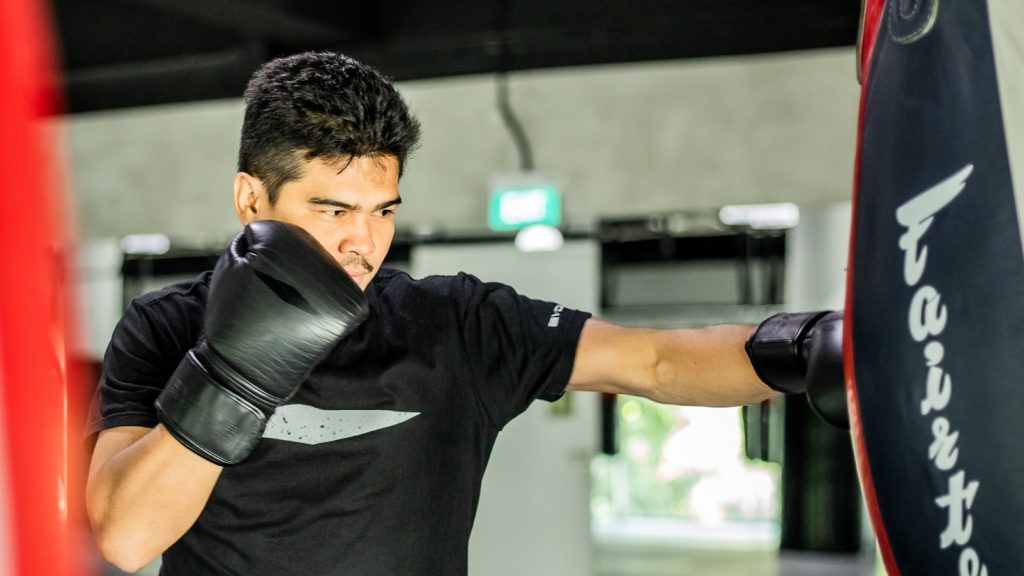
Before you start learning how to protect yourself from punches, it’s important to remember some of the basic principles of boxing. You should already be familiar with these from your earliest classes. By staying true to these essential aspects of the sport, you’ll already have some essential aspects of a solid defense before you start to practice the finer points.
● Protect yourself at all times – Keep your hands up by your cheeks to protect your chin. Many maneuvers will require you to make adjustments from this starting point.
● Keep your chin down – You should also tuck the most vulnerable part of your anatomy (that an opponent can legally attack). Remember to keep your chin protected behind your shoulders when you punch, too.
● Stay on the move – If you stand right in front of your opponent, you’ll be an easy target. Make sure they have to do some work to connect their fists to your head and body.
● Don’t be afraid to get hit – Even the best boxing champions have eaten plenty of shots in their careers. Getting hit is part of the game, and you’ll soon learn that you’re not as fragile as you might think.
Basic Footwork/Distance Management
It might seem obvious, but the most simple principle of striking defense is: if you are outside your opponent’s range, they can’t hit you.
It does not matter how fast your opponent is, how hard they hit, or how accurate their punches are, if they cannot reach you, there is zero chance of them hurting you.
There are hundreds of footwork techniques and drills that will allow you to glide around the ring and control distance, but if you’re a complete novice, two fundamental movements will give you a solid base to build your skillset on.
Step Back
This is as simple and as easy as it sounds.
If your opponent attacks with a jab, simply step back. Just remember to maintain your stance and move your feet properly so you don’t cross them – right foot first, then your left foot.
With just one step, you will have made your opponent miss with their jab and you will be clear of any other left-handed shot.
You’re also pretty safe from their cross, too, because they would have to overreach to connect with it. That would compromise their power and position – leaving them wide open to be countered.
Step Back And Circle
You can add to your backward step by moving laterally. This will help you to stay safe from your opponent’s follow-up shots and adjustments.
Again, this is so simple. After you step back, circle out to the right by stepping with your right foot first, and then continuing to move as far as you feel is necessary.
This is the perfect antidote to a double-jab. Once you’ve moved, your opponent should have missed, and then ended up out of range and out of position for a follow-up strike. Plus, you’re well away from their power side, so they will have to make a big adjustment to use their cross or overhand right.
Once you have avoided these punches, launching a counter-attack is almost as straightforward. Simply step back in and strike.
Footwork Fundamentals
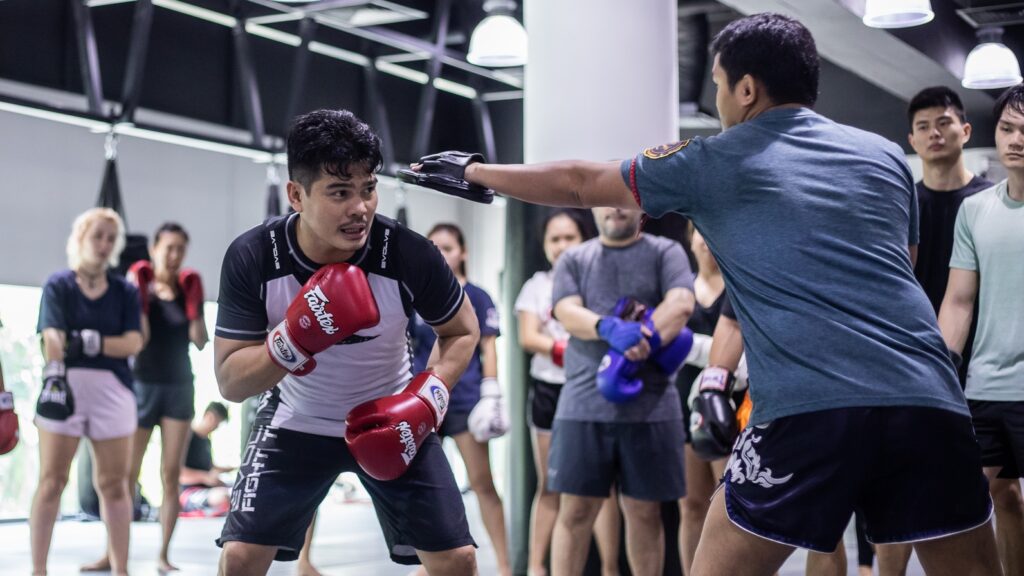
Beyond the simplicity and safety factors, using backward and lateral movement is a great defensive strategy for a few reasons.
● You could encourage impatient boxers to chase you. That could frustrate them, which could lead to them leaving holes for you to exploit.
● Slower opponents will struggle to keep up with you.
● Boxers who lack stamina will get tired of trying to catch you.
However, there are a few drawbacks.
● You’ll be out of range for your own offense.
● Constant in-and-out movement takes a lot of energy.
● You won’t be able to counter without moving back in.
● Too much backpedaling and circling may be seen as a lack of aggression in the judges’ eyes.
● It is hard to generate much power moving backward.
For these reasons, it’s important not to rely completely on backward movement to stay safe, but it can be a solid part of a well-rounded strategy.
Blocking
After getting out of the way of a punch, the easiest form of defense is to block.
This is not the perfect defense because you will still absorb the blow from oncoming fists, but in a scenario where it’s difficult to slip or roll – or if you’re yet to master these techniques – it’s a solid bet to protect yourself.
Any punch can be blocked, but there is a different method depending on the kind of strike your opponent throws your way.
Straight punches
When a jab or cross comes toward your head, just let your glove do the work.
● When you’re attacked by a jab, bring your right hand up to your temple and rotate your shoulders slightly to the left.
● When you’re attacked by a cross, bring your left hand up to your temple and rotate your shoulders slightly to the right.
Make sure you keep your hands tight to your head In each situation so the blows don’t cause you to punch yourself in the face. The oncoming punches should bounce off your glove, leaving you relatively unscathed.
The jab can also be blocked with a basic parry or catch.
● Keep your hands in front of your chin and turn your right palm toward your opponent to catch the punch. This looks almost like you’re using your glove like a focus mitt.
Once again, you have to maintain a strong wrist to make sure your glove is not hit into your face. Also, ensure you don’t use too much force or reach out. That would leave your chin exposed to a hook.
Hooks
Defending hooks uses a similar high guard to the jab and cross.
● For a left hook, bring your right hand up to your temple and rotate your shoulders slightly to the left.
● For a right hook, bring your left hand up to your temple and rotate your shoulders slightly to the right.
You will feel the impact of your opponent’s strike, but stay calm. Blocking is far better than being hit in the face, and you’re in a great position to counter.
You might have heard of the ‘answering the phone’ defense – particularly in mixed martial arts – where athletes reach back toward their ears to protect more of their head. This is not necessary for boxing, where bigger gloves should give you plenty of protection.
Uppercuts
There are a couple of ways to block an uppercut. The method you use will depend on the situation and how confident you are in your abilities.
Start with a safety-first approach that allows you to deflect blows while you keep your hands up. This way, you don’t have to adjust your stance and you’re still in a position to counter.
● For a right uppercut, turn your shoulders to the right so that the punch lands on your left forearm.
● For a left uppercut, turn your shoulders to the left so that the punch lands on your right forearm.
You can also catch the uppercuts – similar to catching the jab as explained above – in two ways, each with a big pro and con.
● Catch an uppercut on the same side (e.g. use your right hand to block a right uppercut).
○ Pro – you can keep your opposite hand up to defend yourself from a punch from your opponent’s other hand.
○ Con – it’s harder to counter in this situation because both your hands are occupied.
● Catch an uppercut on the opposite side (e.g. use your left hand to block a right uppercut).
○ Pro – your opposite hand is free to reply with a quick counter.
○ Con – the arm you used to block is not protecting your face, so it’s open to being hit with your opponent’s other hand.
Body Shots
If you get the hang of blocking punches to the head, you won’t have much difficulty adjusting to body blows. By applying similar ideas as before, you’ll be able to deflect these attacks, too.
● For straight punches, slightly lean in and absorb the blow with your opposite forearm
● For hooks, move your elbows down and lean slightly to that site.
Blocking Fundamentals
Each of the above defenses is fairly simple, but you will need to drill them thousands of times before you can truly master them and seamlessly use them in sparring or a fight.
As you drill them with your training partners, it’s also wise to remember these points to maximize their efficacy.
● Keep your chin down – If a punch does slip past your guard, you need to keep the most vulnerable part of your body safe.
● Try not to flinch – It’s only natural to react this way when you start out, but try to get used to facing punches head-on so you’re all set to return fire.
● Don’t lean back – If you have to move to defend, move your feet as explained above. If the punch lands, you’ll barely reduce its impact, if at all.
● Exhale and meet the strike head-on – The beauty of a good block is that you stay strong and stay in a position to counter immediately. This will help you do that.
● Don’t try to anticipate shots – If your opponent sees you moving to defend a jab to the head, that is their green light to fake and attack another part of your body. Try to react to what your opponent throws instead.
● Don’t get stuck in your shell – It’s unlikely you’ll block every punch that comes your way. If you try, your opponent will be able to have an uninterrupted attack. Even if they can’t finish you, your lack of offense will equal an easy win on the scorecards. A good defense should set up attacks in return.
If you enjoyed this article, you may also like:
